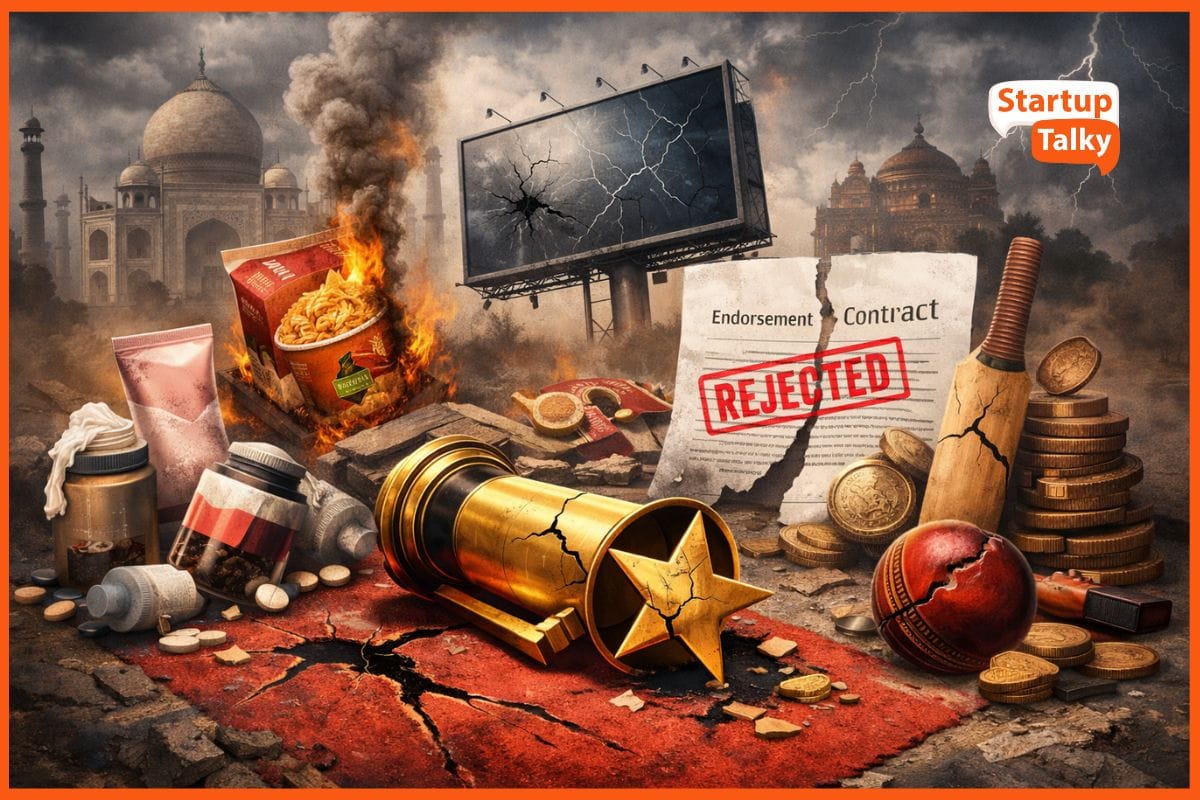Customer UX & Feedback: A Key Tool in the Startup Survival Kit
🔍Insights
If the customer is king, then customer feedback equals bags of gold coins for any business. Knowing what your customers are thinking about your product or service is an added weapon in your entrepreneurial arsenal.
Amazon’s Jeff Bezos once famously said, “We see our customers as guests to a party, and we are hosts. It’s our job every day to make every important aspect of the customer experience a little better.”
In this article, StartupTalky looks at why customer feedback is essential for any business and the various online and offline modes of feedback mechanisms employed by companies.
Importance of Customer Feedback
Online Channels
Post Purchase Feedback
Offline Feedback
Importance of Customer Feedback
Any information that customers express about the product or service they are using is customer information or feedback.
Every successful endeavor thrives on a conversation—a continuous feedback loop between creator and consumer that fuels growth and progress, said Harkunwar Singh, CEO and co-founder of Novatr.
Simply put, a good customer experience bodes well for your business. A statistical report by Bain & Company showed that companies that excelled at customer experience grew revenues by around 4–8%!
Continuous integration of customer insights allows us to refine features, enhance user experiences, and address pain points swiftly. This dynamic feedback mechanism is ingrained in our deep tech development processes, fostering agility and responsiveness to the evolving needs of our user base, said Swayam Agrawal, founder and CEO of Aarika Innovations.
Our team on the ground collects feedback from our outlets regularly to understand the trends in terms of consumer taste preferences. Each comment guides us in refining flavors and enhancing overall customer satisfaction, ensuring your products not only taste great but also resonate with our consumers, said Siddharth Saraf, co-founder of Vaum Tonics.
However, the question arises: what defines a good customer experience?
Bain & Co. suggests answering five questions that will help companies come up with the best customer experience:
- What do we want to stand for in the eyes of our customers?
- Which actions will have the greatest effect on our target customers?
- How can customer feedback promote learning and behavior change?
- What aspects of their experience would our customers want to change?
- How can we anticipate and mitigate risks to sustain the changes?
If you can answer these questions, you might as well have crossed the Laxman-Rekha to connect with your customer!
Online Channels
Unlike a few years ago, digitalization and the plethora of tech tools available have made listening to customers a little bit easier. Some companies tell us their pick as far as online customer listening tools are concerned.
- Interactive Polls: Instant and ready-made feedback is available to companies through startups, which is made public. Dealing with them appropriately can lead to instant customer redressal and thereby alleviate the company’s brand image as well. Soulweaves, a handmade luxury sari brand, often floats polls through their stories on Instagram for certain decisions. “For example, a poll to choose option A or B bag for packaging. We will finally produce the bags that have more votes,” said Swati Kapoor of Soulweaves.
- Surveys: Opinion matters, and there are several platforms where customers can easily chip in with their view of your product or service. However, the key to constructive feedback is to ask the right questions. “We regularly send out surveys via email to gather insights directly from customers about their experiences with our products or services,” said Deepti Sharma, Director of ThinkerPlace.
- Social Media Listening Tools: Several social media analytics tools help to understand the thought processes of a potential customer or an existing one. In the digital sphere, we closely monitor KPIs (key performance indicators) such as returning customer rates and retention rates. These analytics serve as quantitative benchmarks, offering insights into the efficacy of our products and customer engagement strategies, said Akanksha Sharma, co-founder and CEO of CITTA.
A vibrant community helps some other companies touch base with customers. “We make a concerted effort to actively listen to our vibrant community, comprising over 2,500 members, including top-tier company executives, industry experts, learners, and our dedicated research team. This collaborative effort allowed us to pinpoint major improvement areas and craft a course that uniquely equips individuals for the challenges of both today and tomorrow,” said Harkunwar Singh, co-founder, and CEO of Novatr.
A data survey by Nosto found that 61% of consumers—out of which 65% were Gen Z consumers—were more loyal and more likely to buy from a brand if they were invited to take part in a customer advocate community. - Reviews: Reviews, especially positive ones, definitely help in bulking up a company’s brand image, but some of the reviews also end up giving perspective. “Keep track of reviews on platforms like Google My Business or specific industry-related review sites. Positive reviews indicate satisfaction and loyalty,” said Bhawna Sethi, founder of Let’s Influence.
A survey carried out by BrightLocal showed that 98% of people read online reviews for local businesses. The survey also showed that 87% of consumers will use Google to evaluate local businesses.

Post Purchase Feedback
Following up with a customer after a purchase forges a long-lasting connection with the latter.
Since our customers are parents, a feedback call helps us to build a connection and shows our concern and care towards them. This personalized approach ensures that we not only capture quantitative data but also delve into qualitative insights, said Sharma from CITTA.
But there is more to following up with customers after a purchase than merely ticking the box of a marketing practice.
A statistical chart titled 'Attitude of Consumers Worldwide Toward Personalization and Customer Experience Provided by a Company' reported that 88% of consumers feel that the experience a company provides is as important as its product or service.
Another survey of 300 customers across different nations by Twilio in March 2023 showed that consumers say they will become repeat buyers after a “personalized experience.”
At times, it can help you understand the drawbacks and, thereby, go ahead and improve your product or service.
After an offline purchase, we may follow up with customers via calls or emails to gather feedback about their experience, said Sharma of Thinkerplace.
Offline Feedback
Although online platforms have made it easier for companies to collect feedback, the classic traditional modes of feedback can never go out of fashion.
We also ask them directly through old-school methods like surveys, face-to-face chats, and group discussions. This mix helps us see the full picture of what customers feel about us in different situations, said Rajan Gupta, Director of 10x Make it Happen.
Former Managing Director of HDFC Bank Aditya Puri was feared within his company for making surprise visits to his branches so he could get feedback from the customers themselves and check if the bank processes were followed on the ground.
Another ex-HDFC Bank executive, Ruby Jain, who is now chief executive officer and founder of Vyaparify, resonates with the offline mode of communication.
Whatever we have learned is from the market. Sitting in the office, one will never get the idea. Going down to Tier 2 and Tier 3 cities, talking to the local business owners, and understanding what they feel is one way to earn their trust. They should feel that they are one of us. But at the same time, they should feel that you know slightly better than them, or else why would they listen to you? said Jain of Vyaparify, a one-stop platform that provides digital solutions to local businesses.
Founder of kids health supplement brand Kiddoze, Nonita Mehta, talks of various offline modes of accumulating feedback.
“We regularly gather input from parents, healthcare professionals, and customers through surveys, reviews, and direct communication. This helps us refine formulations, improve flavors, and ensure our vitamin supplement meets the needs and preferences of both kids and parents. Additionally, we stay abreast of nutritional research to enhance the effectiveness of our products.”
Conclusion
Customer feedback is what a company not only thrives on but also survives on. However, it is essential to complete the feedback loop and implement it into the product cycle so that you put the user and customer experience before anything else. Like Steve Jobs said, “You’ve got to work with the customer experience first and then backward with the technology. You can't start with the technology and then try to figure out how you are going to sell it.” Making use of technology and various online channels can strengthen your product development cycle, yet keeping a close eye on ground feedback remains equally important.

Must have tools for startups - Recommended by StartupTalky
- Convert Visitors into Leads- SeizeLead
- Website Builder SquareSpace
- Manage your business Smoothly Google Business Suite







